- Home
- Orhan Pamuk
Other Colors Page 29
Other Colors Read online
Page 29
CHAPTER FIFTY-NINE
A Selection from Interviews on The New Life
I began The New Life in the midst of another novel, in a way I could never have predicted. I was writing the novel that would become My Name Is Red. I’d been invited to a festival in Australia, and after a long plane trip I arrived. They took me and a number of other writers to a motel. Three of us—the neurologist Oliver Sacks, the poet Miroslav Holub, and myself—then went out to the seashore. The coast was endless, the sky gray, the sea calm and almost gray. The air was still, close. I was standing on the edge of the continent that I had seen as a horse’s head when I was a child. Sacks went off to the edge of the sea with his palette. Holub went off to look for stones and seashells and soon vanished from sight. I was left alone on the endless shore. It was a mysterious moment. “I am a writer!” I was oddly prompted to tell myself. I was happy to be alive, to be standing in this place, to be in this world. That evening they gave us writers a big party, but I was tired, and I didn’t go. I watched the party from the hotel veranda; the sounds and lights in the distant garden filtered through the leaves of the trees. For me, watching a party from a distance bespeaks a writer’s stance toward life. At just that moment, Oliver Sacks walked through the next door. I told him I had not been able to sleep after the long journey. He brought me a sleeping pill from his room. “I can’t sleep either, let’s share this,” he said. “I never take sleeping pills,” I said, in the way I might say, I never take drugs. “I don’t take them either,” said Sacks, “but it’s the only remedy for jet lag.”
He was a neurologist and a writer I admired, so I took the pill from the palm of his hand, thanked him, went back to my room, swallowed the pill, got into bed, and waited hopefully. But sleep did not come. The thought that had come to me earlier—that I was a writer—was now mixed with a longing for “purity,” for truth. I was lying in my bed in the darkness, thinking about my life. I felt as if only happiness and writing something good would bring me peace. I rose from bed like a sleepwalker, took out the blank notebook that I always carry with me, sat down at the desk in that big room, and began to write: I read a book one day and my whole life was changed. This sentence had been in my mind for years. I had long wanted to begin a novel with that sentence. The hero would resemble me too. The reader would learn nothing of the book the hero had read, only of what happened to the hero after he finished reading it. The reader would then use this knowledge to figure out what book the young man had read. It was in this way that I wrote my first paragraph of The New Life, and it wasn’t long before I was caught inside it. I was very happy about that. I took a break from Red and wrote this book in the space of two years, remaining faithful to the form, the poem, in which it had arrived.
When I was writing the book, I spent a lot of time traveling to small towns that were not too far from Istanbul—the towns of the Marmara region, where The Silent House is set. Actually, all of Turkey’s big cities are coming to resemble provincial towns (as opposed to big villages), and in this sense, Istanbul is a small town too. Turkey’s provincial towns reflect something other than the old Reşat Nuri Güntekin’s provincial novels: “A governor, a director of land registry, a few leading citizens, a landlord, a Kemalist teacher, and an imam.” The atmosphere of today’s Anatolian town is created by its Arcelik and Aygaz chain stores, its betting parlors, its plexiglass panels, its televisions—all the same brand—and its pharmacies, pastry shops, post offices, and shabby hospital, where there is always a queue at the door. I may be insisting too much, but I’d like to add this: Ziya Gökalp, the architect and leading propagator of Turkish nationalism, defines a nation through its common culture, its common language, its shared history, and other such elements. In some sense, he is searching for the principles of the unified modern Turkey that he hopes to create. But today what unifies Turkey is not language, history, or culture. It is the Arçelik and Aygaz distributors, the football pools, the post offices, and the Butterfly furniture stores. These centralized concerns have networks that spread all across the country, and the unity it suggests is far stronger than the unity suggested by Ziya Gökalp.
Actually, we’ve all come across sales conventions somewhere. Most take place in five-star hotels. Whenever we go to such a hotel, we come across crowds of men with their hands in their pockets, looking at the tourists, looking for fun, and perhaps if it’s the early hours of the morning and they have had a bit to drink, they’ll grow a bit childish, as one does become when he is doing his military service. These salesmen who will spend two or three days a year at sales conferences. They see one another, meet one another, pass together through whatever indoctrination the company wants to give them about the company’s identity, and there results a childish excitement, a feeling of brotherhood, and the air of male friendship that we know so well in this country. In general, spouses do not come to these conventions.
The company wants to acquaint its salesmen with its “promotions” and with the updates to its image. So if it is a television manufacturer, there will be a tower of televisions in the lobby; if it is a pharmaceutical company, there will be mountain of medicines or a similar monument to pill consumption. As in secret societies, the creation of an identity—a sense of “us”—is of the utmost importance, so you will see the name of the company emblazoned on key chains, fancy notebooks, envelopes, pencils, and lighters they give out as gifts to the rank and file. Those gifts also bear the symbols and logos that create that identity, that sense of “us.”
The New Life caramels I describe in the book are real; they were still producing them when I was a child. There were other companies that produced imitations, and this is one of the details in the book that I enjoy the most, because The New Life is also the name of Dante’s novel, and the winds from that book may be faintly felt in mine. In other words, The New Life refers to a caramel that was popular all over Turkey during the 1950s and also to a book by Dante.
In the middle of the night, when you are fast asleep, your bus enters a small town. The town’s lights are pale, its buildings shabby. There is no one in the streets. But through the high windows of the bus you can see a house whose curtains are open. Perhaps that is where the bus stops for a traffic light. And in the midst of all this activity, you suddenly find yourself looking through the open curtains of a house on a side street in a small town where you know no one, where you see people smoking in their pajamas, reading newspapers, or watching the late news before turning off the television. Everyone who has taken a night bus through Turkey has experienced this. Sometimes we come eye to eye with these people in the privacy of their homes. In an instant, you go from sixty miles an hour to a full stop, to view the most awkward and most intimate details of their slow-moving lives. These are the unequaled moments, when life shows you, in such a mysterious way, that the world is made up of so many different lives, so many different people. When we open a refrigerator, we see pots and tomatoes that make us jealous of another life in the same way. We compare ourselves with these people. We are interested in this or that aspect of their lives, and we would like to be in those lives. We dream of being more like those people, of becoming them. To be attracted to another life is to understand how relative our own lives are, while also unique.
I am interested in Sufism as a literary source. As a discipline comprising positions and actions that train the soul, I cannot engage with it, but I look at the literature of Sufism as a literary treasure. As I sit at my table, the child of a republican family, I live like a man committed to Western Cartesian rationalism to the nth degree. Reason sits at the center of my existence. But at the same time, I try to open myself as much as I can to other books, other texts. I do not look at those texts as material, I take pleasure in reading them—they bring me joy. This joy lifts my spirit. Whatever it touches, it will have to reckon with the rationalist in me. Perhaps my books rise out of these two poles, attracting and repelling each other.
CHAPTER SIXTY
A Selection from Interview
s on My Name Is Red
Filiz Çağman, the director of Topkapi Palace, was the first person to read My Name Is Red, and she was also the most meticulous. Filiz Hanim was the director of the palace library when I began the book. Before I began writing, we had long conversations. It was Filiz Hanim who told me what we see in unfinished miniatures—that artists setting out to draw horses began with the feet, suggesting that they drew from memory.
Before My Name Is Red was published, Filiz Hanim and I met at Topkapi Palace one Sunday morning and went through the book page by page. Our work went on until late in the day. It was dark outside by then; the palace museum had closed. We went into the courtyard of the harem. Wherever we looked, it was dark, empty, ominous. Autumn leaves, wind, cold. Dark shadows flitted across the walls of the treasury I describe in the book. We stood there, watching in silence, for a very long time. In our hands were pages of the still-unpublished manuscript. It was worth writing My Name Is Red just to stand there in the palace on that dark and windy Sunday afternoon.
Until I began to imagine this novel, my understanding and love of Islamic miniatures was limited. To distinguish these paintings by period and to appreciate their styles, one needed a great deal of patience, and this patience needed love to sustain it. At the beginning, loving these paintings was the hardest thing for me. It was like loving the subject. In the Islamic section of the Metropolitan Museum of Art in New York, they used to exhibit miniatures much better than they do now, especially the Persian miniatures, and you could get very close to the pages and the paintings. In the early 1990s, when the showcases were accessible, I would go there and look at them for hours on end. Some of them bored me, of course; in others I found a sense of play, of rapture; and others still I learned to love by looking at them for a very long time. I learned that you had to work to appreciate them. At the beginning, it was a bit like trying to read a book in a language you don’t know, with only a very bad dictionary to help you; you get only the slightest sense of what is going on; hours pass and nothing happens. It pains you to know that there are others well versed in this language, and you envy them, thinking that you yourself will never attain their level of proficiency or its attendant pleasures. But on the other hand there is a matter of pride to it. At first you don’t know how to approach these strange and superficially indifferent, closed, difficult, slant-eyed, and identical people arranged with no perspective—how are you going to find it in yourself to love people whose clothes are so distant and Eastern?—but by looking at their faces, looking into their eyes, you learn to love them. It’s not all the books I have read that I’m proud of but that over a period of ten years I learned to love them.
The real hero of My Name Is Red is the storyteller: Every night he goes to a coffeehouse to stand next to a picture and tell a story. The saddest part of the book is his sorry end. I know how this storyteller feels—the constant pressure. Don’t write this, don’t write that; if you’re going to write that then put it this way; your mother will be angry, your father will be angry, the state will be angry, the publishers will be angry, the newspaper will be angry, everyone will be angry; they’ll cluck their tongues and wag their fingers; whatever you do, they interfere. You might say, “So help me God,” but at the same time you’ll think, I am going to write this in such a way that it will make everyone angry, but it will be so beautiful that they’ll bow their heads. In a cobbled-together demi-democracy like ours, in this society so riddled with prohibitions, writing novels puts me in a position not altogether different from my traditional storyteller’s; and whatever the explicit political prohibitions might be, a writer will also find himself hemmed in by taboos, family relations, religious injunctions, the state, and much else. In this sense, writing historical fiction speaks of a desire to put on a disguise.
One of my main preoccupations in My Name Is Red was the question of style. Style as I understand it today is a post-Renaissance concept embraced by Western art historians in the nineteenth century, and it is what distinguishes each artist from all others. But to dramatize the singularity of a particular artist’s style is to encourage a cult of personality. Persian artists and miniaturists of the fifteenth and sixteenth centuries are not known for their individual styles but for the reigning shah, the workshop, the city in which they worked.
The central issue of My Name Is Red is not the East-West question; it is the arduous work of the miniaturist: the artist’s suffering and his complete dedication to his work. This is a book about art, life, marriage, and happiness. The East-West question is lurking somewhere in the background.
All my books are made from a mixture of Eastern and Western methods, styles, habits, and histories, and if I am rich it is thanks to these legacies. My comfort, my double happiness, comes from the same source: I can, without any guilt, wander between the two worlds, and in both I am at home. Conservatives and religious fundamentalists who are not at ease in the West, as I am, and idealist modernists who are not at ease with tradition, will never understand how this might be possible.
As in The Silent House, the characters speak in the first person. Everything talks, not just the characters but also the objects. The title sets the tone.
The title My Name Is Red came to me as I was finishing the book, and I immediately liked it. The book’s original title was “Love at First Picture.” This had to do with the theme of falling in love by looking at the picture of Hüsrev and şirin that carried the caption “Love at first sight.” Hidden Face, a film inspired by a story in The Black Book for which I wrote the script, explored the same theme: falling in love through looking at pictures.
şirin falls in love with Hüsrev by looking at a picture, but why, when she goes to the forest, does she not fall in love at first sight of the picture? The second time she goes to the forest, she sees it again, and again she does not fall in love. It is when she sees him on her third visit to the forest that she falls in love. Shouldn’t she have fallen in love with a man this handsome and enchanting the first time she saw him? asks my hero, Black. Shekure replies that, in legends, everything happens in threes. In legends everyone has three chances, but in the modern novel, each motif is used only once. The title I discarded was linked to the book’s central issue. My Name Is Red circles around this question, addressing it from all angles: If şirin falls in love with Hüsrev by looking at his picture, Hüsrev’s picture must certainly have been done in the style of Western portraiture, because Islamic miniatures portray a much more generic type of beauty. After looking at the picture, she can recognize him on the street (as with a picture on an ID card). There were hundreds of pictures done of Tamburlaine and the sultans and khans of the period, but today we have no idea of what they actually looked like: It’s always a picture of an ideal sultan or khan. Is it possible to fall in love with someone who looks so much like everyone else?
My books turn on these themes. Kara, who is to a degree modeled on Hüsrev, goes into exile when his love is not returned and for years thinks of his beloved’s face. But after a point he can no longer remember it and reasons that if only he had a portrait in the Western sense he could bring her to life before his eyes. He knows that if we don’t have a picture of the one we love, no matter how much we love her, her face will slowly be erased from our memory. Instead of her face, what we see are the ideas of various memories. This was another theme of the book: to remember someone’s face, the uniqueness of people’s faces. This is why the first title was Love at First Picture.
The story of Hüsrev and şirin is the best-known and most frequently illustrated story in Islamic literature, and it served as a model for many scenes, gatherings, situations, and stances in my novel. We all share a culture; we’ve read novels, seen films. All these inform the narrative archetypes (in the Jungian sense) we have in our minds. A new story is measured against the template of the old story in our heads, and on that basis we like or dislike it. Like a film we will remember all our lives, a film we would have liked to star in: Shall we call it West Side Story
or Romeo and Juliet? I find the story of Hüsrev and şirin less romantic and more realistic. It’s a story with more politics, more coyness, more intrigues, and in that sense it is more sophisticated.
My novel’s central concern: to blend the more distilled and poetic style derived from works in the style of Persian miniatures with the speed, power, and character-driven realism of the novel as we understand it today. In this sense the story’s characters—let’s exaggerate this a little—suggest clues that play games with real full-blooded characters like Shekure in the novel, and from time to time they resemble us today. But in another sense, being taken from scenes portrayed in miniatures they become more distant from us. My novel travels between these two poles, of intimacy and recognition on the one hand, and remoteness and generalities on the other.
The characters in the book also view nature through pictures or archetypes. This is the part of the book I love the most. This comes from the part of me that burns with the desire to take the cultural past—our traditions—and play with it, to produce new effects. My book really has only one center, one heart: the kitchen! It is the place where Hayriye seeks to influence Esther the clothier with gossip and food; Shekure, too, comes downstairs to the kitchen to advance her intrigues, send off letters and notes, scold her children, and supervise the cooking. The kitchen and all that it contains are the platform on which everything stands. But when I was writing this book that has so much to do with pictures, I could not see nature through the eyes of the characters, not even through the eyes of the miniaturists. For my characters—and for modern readers too—what is of interest is not nature as we all know it but nature as miniaturists painted it. It would be true to say that my book rises out of that parody. There are many descriptions of horses. The horses talk, the horses spend pages talking about how they’re painted. One horse even describes himself.

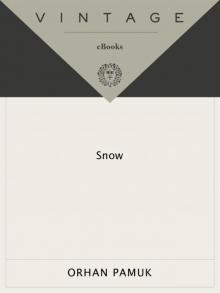 Snow
Snow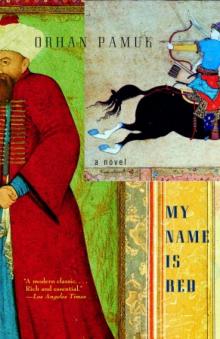 My Name is Red
My Name is Red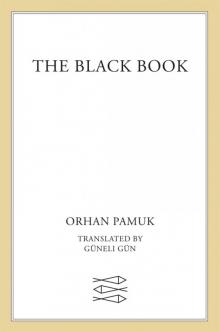 The Black Book
The Black Book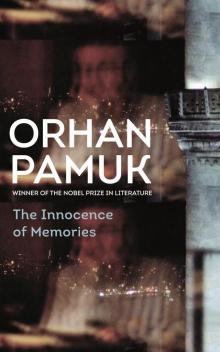 The Innocence of Memories
The Innocence of Memories The White Castle
The White Castle Other Colors
Other Colors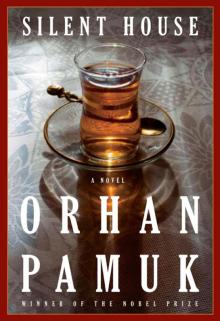 Silent House
Silent House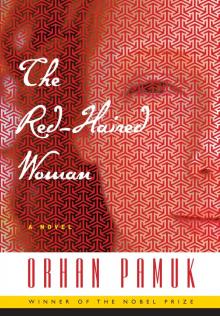 The Red-Haired Woman
The Red-Haired Woman The Museum of Innocence
The Museum of Innocence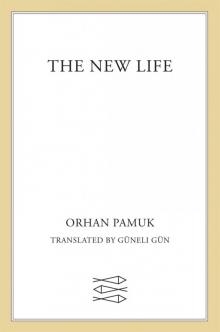 The New Life
The New Life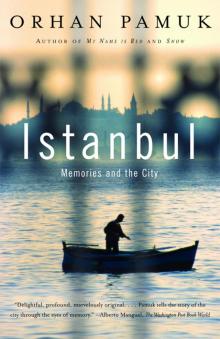 Istanbul
Istanbul